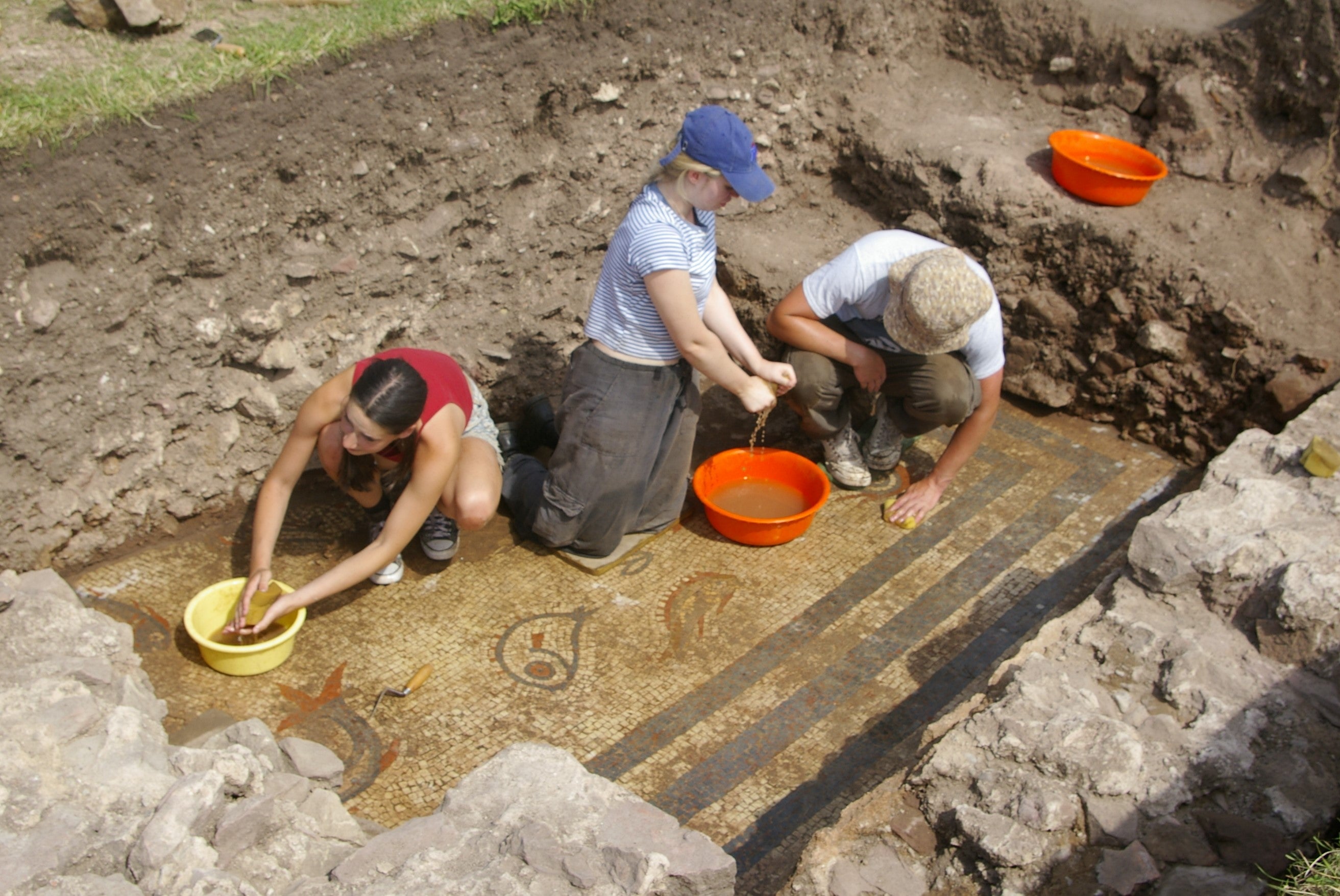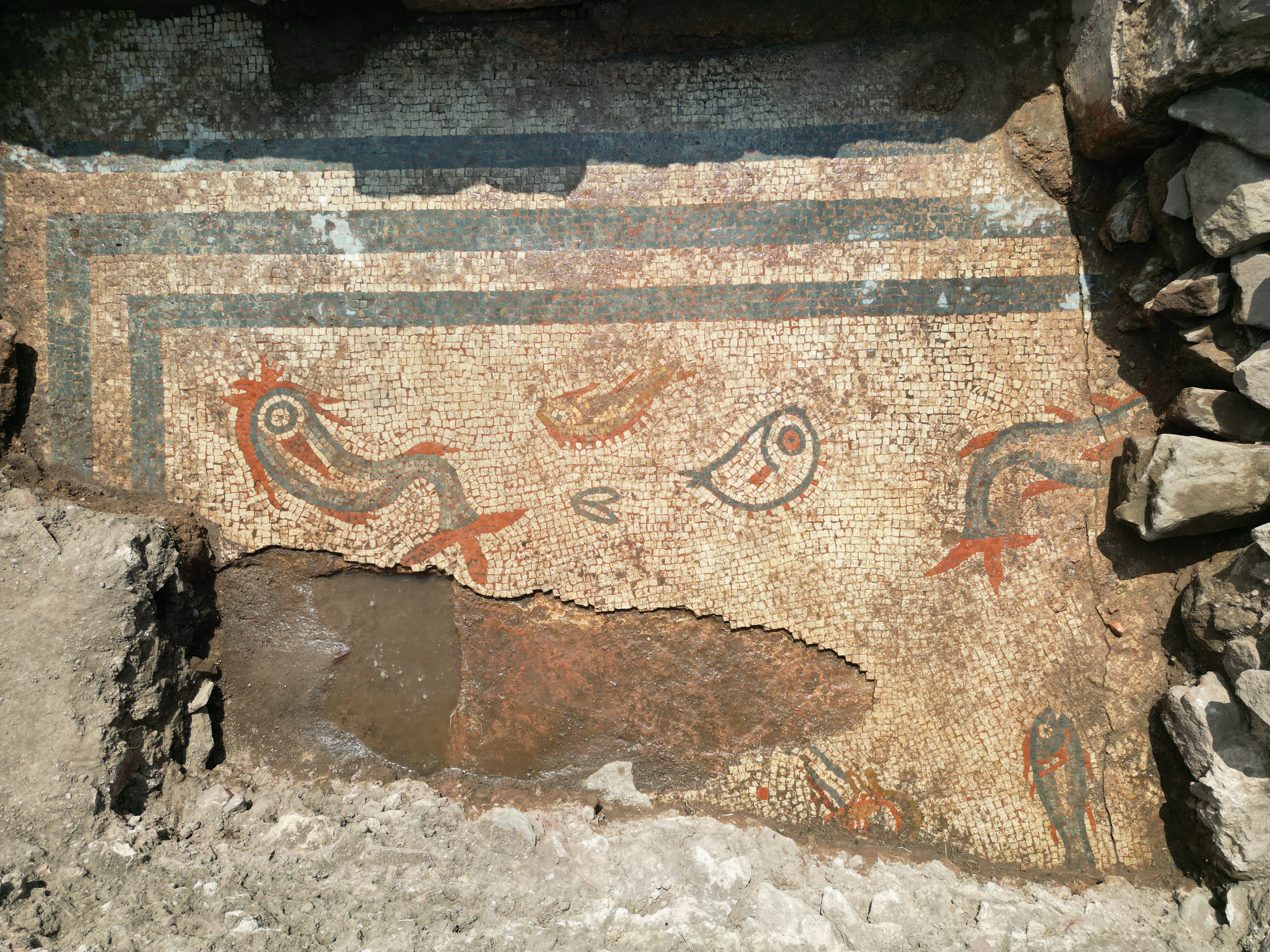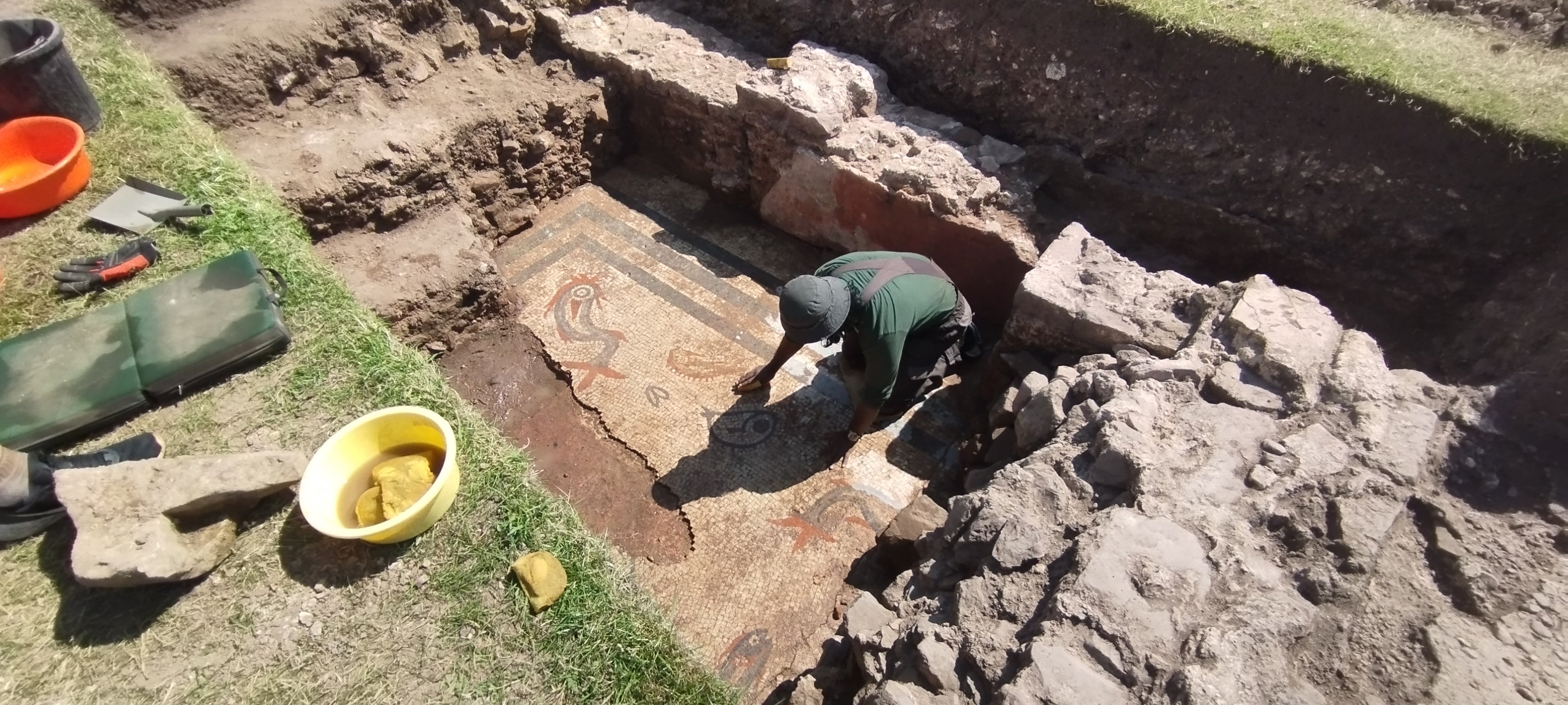Dolphin mosaic discovered during dig at England’s ‘lost city’
The archaeologists say the mosaic would have been commissioned by a wealthy and important person
Your support helps us to tell the story
From reproductive rights to climate change to Big Tech, The Independent is on the ground when the story is developing. Whether it's investigating the financials of Elon Musk's pro-Trump PAC or producing our latest documentary, 'The A Word', which shines a light on the American women fighting for reproductive rights, we know how important it is to parse out the facts from the messaging.
At such a critical moment in US history, we need reporters on the ground. Your donation allows us to keep sending journalists to speak to both sides of the story.
The Independent is trusted by Americans across the entire political spectrum. And unlike many other quality news outlets, we choose not to lock Americans out of our reporting and analysis with paywalls. We believe quality journalism should be available to everyone, paid for by those who can afford it.
Your support makes all the difference.A rare 2,000-year-old mosaic depicting dolphins has been uncovered in a Roman city in Shropshire, English Heritage has said.
The mosaic which dates from the early 2nd century was found by archaeologists carrying out excavations looking for the main civic temple at Wroxeter, one of the best preserved examples of a Roman city in Britain.
The experts behind the dig said the discovery, along with a large number of small finds including coins and pottery, would help them date the various phases of the city and the activities taking place.

Wroxeter, or Viriconium as it was known, was established in the 90s AD and was once as large as Pompeii, with a civic bath house, market place, county hall and judicial centre as well as more than 200 houses.
Today, a small number of ruined buildings are all that remains of the lost city above the ground, cared for by English Heritage.

The excavation, a collaboration between English Heritage, the University of Birmingham, Vianova Archaeology and Heritage Services, and Albion Archaeology, opened trenches near the city forum as part of efforts to find the main civic temple based on geophysical surveying showing a walled precinct.
It uncovered a large monumental building on the city’s main road, as well as a shrine or mausoleum which may have honoured an important individual in Wroxeter’s earliest history, experts said.
They also found the mosaic, which dates to soon after the city was established, and depicts dolphins and fish in bright colours still visible today, along with a painted plaster wall on one side which survives to knee height.
The archaeologists say the mosaic would have been commissioned by a wealthy and important person.

Win Scutt, senior properties curator at English Heritage, said: “Although much of Wroxeter is unexcavated, geophysical surveys have helped us understand the layout of the city and we were aware that to the north of the forum there was another large civic building, almost certainly the main civic temple, buried underground.
“Our excavations were in hope of discovering the walls of this building, but we never suspected we would find a beautiful and intact mosaic, which had lain hidden for thousands of years.
“This discovery, alongside a large number of small finds such as coins and pottery, will go a long way in helping us to date the various phases of the city and indicate the kinds of activities that were taking place.
“It’s always an astonishing moment when you uncover a fragment of beauty hiding just below the ground.”
The area of the excavation has now been reburied for its protection and preservation, English Heritage said.

Join our commenting forum
Join thought-provoking conversations, follow other Independent readers and see their replies
Comments